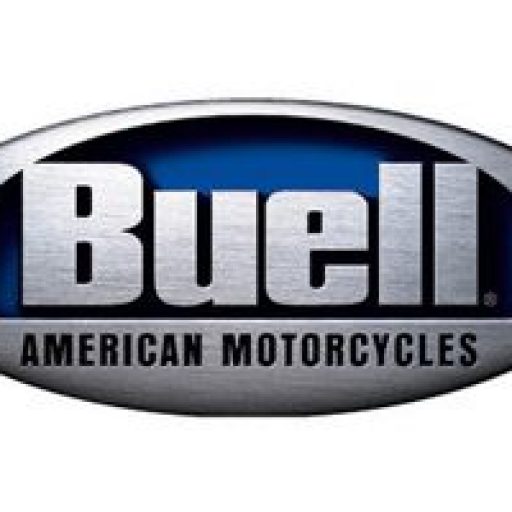Your cart is currently empty!
Essential Guide: Repairing and Overhauling Buell Engines

Repairing and overhauling Buell engines is a meticulous task that requires precision, expertise, and most importantly, adherence to the manufacturer’s guidance. Buell motorcycles, known for their distinctive design and performance, have engines that demand careful attention to detail during maintenance. Understanding the importance of following manufacturer guidelines, recognizing the key steps involved, using the right tools, and being aware of common challenges are all crucial to ensuring a successful overhaul. This article delves into these aspects to provide a comprehensive overview for anyone looking to repair or overhaul a Buell engine.
Understanding the Importance of Manufacturer Guidance
Manufacturer guidance serves as the cornerstone for any engine repair or overhaul, particularly when it comes to specialized engines like those found in Buell motorcycles. The manufacturer’s manual provides detailed instructions that are tailored specifically to the engine’s unique design and specifications. Following these guidelines ensures that each component is handled correctly, thereby maintaining the engine’s performance and longevity. Deviating from these instructions can result in improper repairs, leading to reduced efficiency or even catastrophic engine failure.
Adherence to manufacturer guidance is also critical for safety reasons. Engine components operate under high stress and precise conditions; incorrect handling can pose significant risks. For instance, torque settings for bolts and screws are specified to ensure that parts are securely fastened without causing damage. Neglecting these specifications can lead to loose components, oil leaks, or other hazardous situations. Therefore, the manufacturer’s manual acts as a safety net, ensuring that all procedures are performed correctly and safely.
Another vital aspect of manufacturer guidance is the use of specialized tools and equipment. Buell engines may require unique tools that are specifically designed for certain tasks, such as removing or installing components. The manufacturer’s manual specifies these tools, ensuring that repairs are executed without causing unintended damage. Using incorrect tools can lead to stripped bolts, damaged threads, or misaligned parts, all of which can compromise the engine’s integrity.
Furthermore, following the manufacturer’s guidance helps in identifying and diagnosing issues more accurately. The manual often includes troubleshooting sections that guide the mechanic through common symptoms and their potential causes. This systematic approach saves time and reduces the likelihood of misdiagnosis, ensuring that the root cause of the problem is addressed effectively. Accurate diagnosis is crucial for efficient repairs and preventing recurring issues.
Lastly, adhering to manufacturer guidelines is essential for warranty compliance. If the engine is still under warranty, any repairs or overhauls must be performed according to the manufacturer’s specifications to avoid voiding the warranty. This ensures that the owner retains the right to claim warranty benefits if needed. Even for out-of-warranty engines, following these guidelines can prevent costly mistakes and extend the engine’s lifespan.
For those seeking detailed manufacturer guidance for Buell engines, resources like the Buell Manual provide invaluable information. These manuals offer comprehensive instructions and specifications necessary for proper engine repair and overhaul, ensuring that mechanics can perform their tasks with confidence and accuracy.
Key Steps in Overhauling Buell Engines
Overhauling a Buell engine involves several critical steps that must be meticulously followed to ensure optimal performance and reliability. The first step is a thorough inspection of the engine. This involves disassembling the engine to examine each component for wear, damage, or other issues. Key areas to inspect include the cylinder heads, pistons, crankshaft, camshaft, and bearings. Identifying any signs of wear or damage at this stage is crucial for determining the extent of repairs needed.
The next step is cleaning all engine components. Over time, engines accumulate dirt, carbon deposits, and other contaminants that can affect performance. Each part should be cleaned using appropriate methods and solutions, as recommended by the manufacturer. Proper cleaning ensures that any debris or contaminants are removed, preventing them from causing further damage or affecting the reassembly process.
Following cleaning, the engine components must be measured and tested for accuracy and wear. This includes checking the cylinder bore, piston clearance, crankshaft journals, and other critical dimensions. The manufacturer’s manual provides the specific tolerances and measurements that must be adhered to. Components that fall outside these tolerances may need to be repaired or replaced. Accurate measurement is essential for ensuring that the engine operates within its designed specifications.
Once the components have been inspected, cleaned, and measured, the reassembly process begins. This step requires careful attention to detail, ensuring that each part is correctly installed and torqued to the manufacturer’s specifications. Using new gaskets, seals, and other consumables is recommended to ensure a secure and leak-free assembly. The manufacturer’s manual provides step-by-step instructions for reassembly, which must be followed precisely to avoid errors.
After reassembly, the engine must be tested to ensure it operates correctly. This involves running the engine under controlled conditions to verify that all components function as expected. Key performance indicators such as oil pressure, temperature, and engine noise are monitored to detect any abnormalities. The manufacturer’s manual often includes specific testing procedures and criteria for evaluating engine performance.
Finally, the engine should undergo a break-in period as recommended by the manufacturer. This period allows the engine components to settle and wear in gradually, ensuring optimal performance and longevity. Following the break-in procedures outlined in the manufacturer’s manual is crucial for preventing premature wear and ensuring the engine delivers reliable performance.
For detailed instructions and specifications, the Buell Manual provides comprehensive guidance on each step of the overhaul process. These manuals are an invaluable resource for ensuring that every aspect of the engine overhaul is performed correctly and efficiently.
Tools and Equipment for Effective Engine Repair
Effective engine repair and overhaul require the use of specialized tools and equipment, many of which are specified in the manufacturer’s manual. These tools are designed to work with the unique components and configurations of Buell engines, ensuring that repairs are performed accurately and without causing damage. Essential tools include torque wrenches, micrometers, dial gauges, and engine stands.
Torque wrenches are crucial for ensuring that bolts and fasteners are tightened to the manufacturer’s specified torque settings. Over-tightening or under-tightening can lead to component failure or damage. The manufacturer’s manual provides the exact torque values for each fastener, making it essential to use a reliable torque wrench to achieve these settings accurately.
Micrometers and dial gauges are used for measuring engine components with high precision. These tools are essential for checking dimensions such as cylinder bore, piston clearance, and crankshaft journals. Accurate measurements are critical for ensuring that the engine operates within its designed tolerances. The manufacturer’s manual provides the specific measurements and tolerances for each component, guiding the use of these precision tools.
Engine stands are another essential piece of equipment for effective engine repair. These stands provide a stable and secure platform for working on the engine, allowing mechanics to rotate and position the engine as needed. This makes it easier to access different parts of the engine and perform repairs more efficiently. The manufacturer’s manual often includes recommendations for engine stands that are compatible with Buell engines.
In addition to these tools, specialized equipment such as valve spring compressors, piston ring compressors, and camshaft alignment tools may be required. These tools are designed for specific tasks and are often necessary for disassembling and reassembling engine components without causing damage. The manufacturer’s manual specifies the use of these tools, ensuring that each task is performed correctly.
Using the correct tools and equipment not only ensures accurate repairs but also helps prevent damage to engine components. For example, using a piston ring compressor prevents the rings from being damaged during installation, while a valve spring compressor allows for safe and efficient removal and installation of valve springs. The manufacturer’s manual provides detailed instructions on the use of these tools, making it essential to follow these guidelines.
For those looking to equip their workshop with the necessary tools and equipment for Buell engine repair, the Buell Manual provides comprehensive information on the tools required for each task. These manuals ensure that mechanics have the right tools for the job, enabling them to perform repairs with confidence and precision.
Common Challenges in Buell Engine Overhauls
Overhauling Buell engines can present several challenges, many of which stem from the unique design and specifications of these engines. One common challenge is dealing with worn or damaged components. Identifying and sourcing replacement parts can be difficult, especially for older or discontinued models. The manufacturer’s manual often provides part numbers and specifications, making it easier to find compatible replacements.
Another challenge is ensuring that all components are correctly aligned and installed. Buell engines have precise tolerances and configurations, meaning that even minor deviations can affect performance. For example, incorrect timing of the camshaft or improper alignment of the crankshaft can lead to poor engine performance or even damage. The manufacturer’s manual provides detailed instructions and alignment marks to ensure correct installation.
Dealing with seized or corroded components is another common issue. Over time, engine parts can become seized due to corrosion or lack of lubrication. Removing these components without causing further damage can be challenging. The manufacturer’s manual often includes tips and techniques for safely removing seized parts, such as using penetrating oils or specialized pullers.
Electrical issues can also pose challenges during an engine overhaul. Modern Buell engines are equipped with advanced electronic systems that control various aspects of engine performance. Diagnosing and repairing electrical issues requires a thorough understanding of these systems and the use of specialized diagnostic tools. The manufacturer’s manual provides wiring diagrams and troubleshooting guides to assist with diagnosing and fixing electrical problems.
Ensuring proper lubrication and sealing is another critical challenge. Engine components must be adequately lubricated to prevent wear and overheating. Using the correct type and amount of oil, as specified in the manufacturer’s manual, is essential. Additionally, ensuring that all gaskets and seals are correctly installed and in good condition is crucial for preventing oil leaks and maintaining proper lubrication.
Finally, maintaining the correct operating conditions during the break-in period can be challenging. New or overhauled engines require a break-in period to allow components to settle and wear in gradually. Following the break-in procedures outlined in the manufacturer’s manual is essential for preventing premature wear and ensuring long-term
